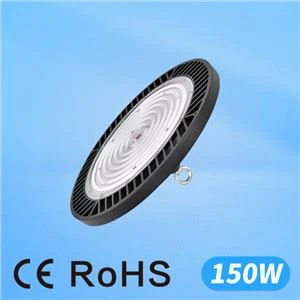What is Gas Group IIB + H2? – An Explanation
Several things have to be kept in mind while manufacturing lighting for a hazardous environment. The presence of combustible substances such as gases, liquids and dust particles makes such kinds of areas highly susceptible to fire and explosion, and hence, extreme caution has to be exercised since light sources are themselves prone to flaring up.
Explosion Proof Lighting has been a boon to industries operating under such circumstances. Our detailed guides on Explosion Proof Lighting can help obtain an introductory idea about these products:
What is Explosion Proof Lighting
Why should you use explosion proof lighting
Types of explosion proof lighting
In this article, we will discuss the engineering behind it with emphasis on a specific angle – gas group IIB and H2.
Mechanism of an Explosion Proof Lighting
Traditionally, Explosion Proof Lighting (or Ex Lighting, as they are commonly called) have used explosion-proof junction boxes as a method of protection. This kind of box can withstand the pressure of an explosion within the enclosure itself and is specifically constructed to accommodate the electrical equipment. Hence, this kind of protection method is extremely useful in hazard-prone areas.
This kind of protection box is the oldest method to prevent an explosion. The construction is done with the assumption that it will prevent the gas from penetrating everywhere. However, the gasket of the protection box may not always be effective enough to block out the entrance of gases into the junction box completely. Thus, if the gas does penetrate inside and there is a trigger such as a spark inside the electrical wiring, the explosion is confined within the enclosure.
Hence, the construction of the junction box has to be done with such mechanical strength such that it contains the extreme pressure of the explosion and prevents burned gases from escaping. This escape path is commonly known as the ‘flame path’ which is basically the interface between two parts of the junction box. The gases eventually exit from the flame path, but not before cooling down, so that they cannot trigger the external atmosphere.
Therefore, the flame path has to be constructed in such a manner that it is sufficiently long and has a gap narrow enough to slow down the escape of the gas, allowing it time to cool down.
An Introduction to Gas Groups
The International Electrotechnical Commission has laid down specific rules namely EN 70069-0 and EN 60079-1 with regards to electrical equipment fit to be used in a hazardous environment.
EN 70069-0 divides electrical equipment into three groups:
Group I – Electric equipment that can be used in mines with the presence of firedamp gases.
Group II – Equipment fit to be used in an explosive atmosphere with the presence of surface gases.
Group III – Electric equipment that can be used in potentially explosive atmospheres where dust is present.
Group II is further divided into three subcategories based on the presence of specific gases in the environment:
IIA – A typical gas in this group would be Propane.
IIB – A typical gas in this group would be Ethylene.
IIC – A typical gas in this group would be Hydrogen and Acetylene.
Equipment is marked based on the suitability of usage in a particular gas group. Any usage of lighting materials in a hazardous environment should be done based on this equipment marking.
Gas Group IIB + H2
An environment with an abundant presence of Hydrogen is known as gas group IIB + H2. Hydrogen concentration by volume of 4% to 77% in an area is considered to be hazardous. High hydrogen concentration is often found in oil refineries. Any area with a hydrogen concentration of 30% or more is considered to be IIB + H2.
So, how does the IIB + H2 grouping affect Ex Lighting?
Ex Lighting with an IIB + H2 mark can be used in an environment containing high amounts of hydrogen. The junction box of such lighting is designed to fit the explosive atmosphere. The flame path of the junction box is flanged in nature and can be rectangular or square in shape. The usage of flanged flame paths is in accordance with EN 60079-1 standard. These kinds of junction boxes can be easily assembled. They often cost lower than junction boxes suitable for gas group IIB or IIC.
These kinds of enclosures are known as ‘Ex d Explosion-proof enclosures’. They can be made of aluminium or stainless steel. They are regularly used in offshore oil platforms and land-based petrochemical plants.
When it comes to using Ex Lighting, it is always suggested to opt for ones that have been tested and possess the necessary labels to be used safely in hazardous areas. Safety is not an option but a necessity and hence it is essential to avoid taking chances with it.






